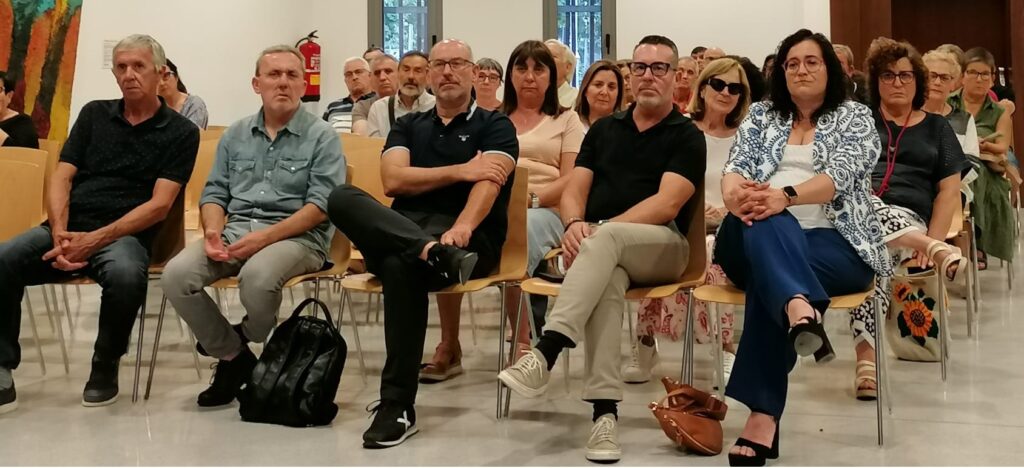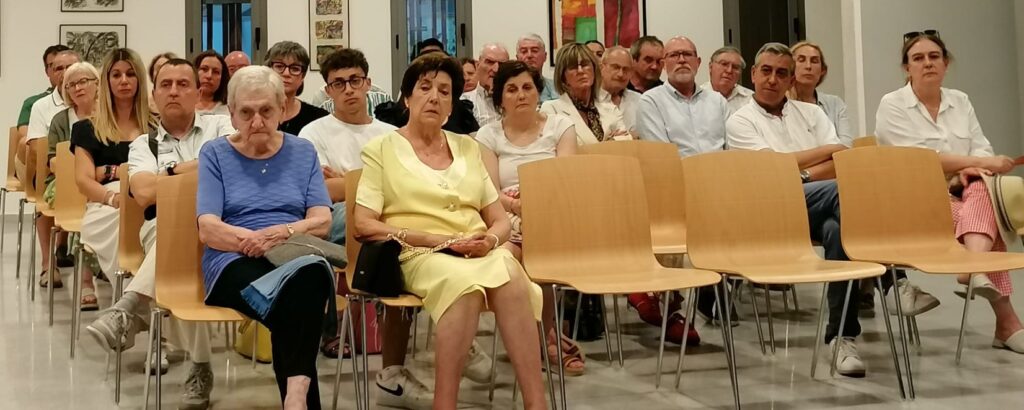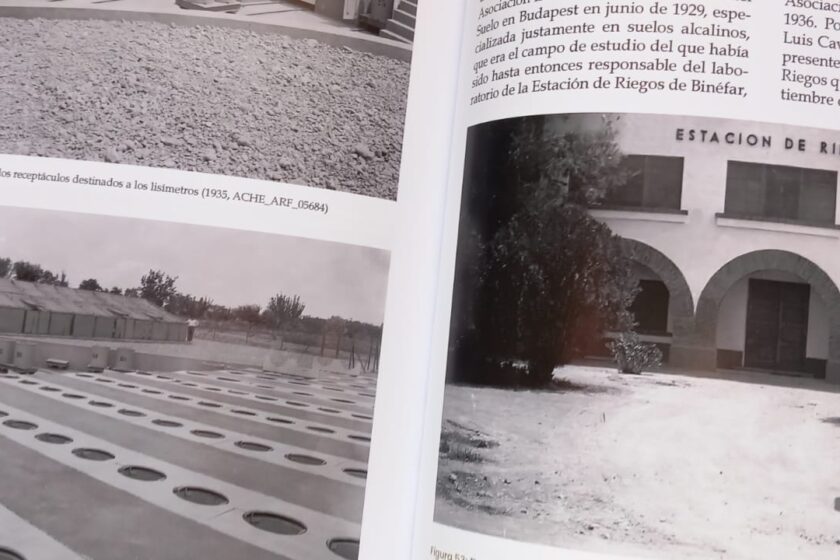On July 25th, the book “The Irrigation Station of Binéfar” by Silvia Isábal Mallén was presented in the Binéfar Town Hall. The book was introduced by Enrique Playán, a member of the RAMA group at the EEAD-CSIC. The event, which was well attended, was organized by Binéfar Town Hall, the Instituto de Estudios Altoaragoneses of the Diputación Provincial de Huesca and the Centro de Estudios Literanos (CELLIT).
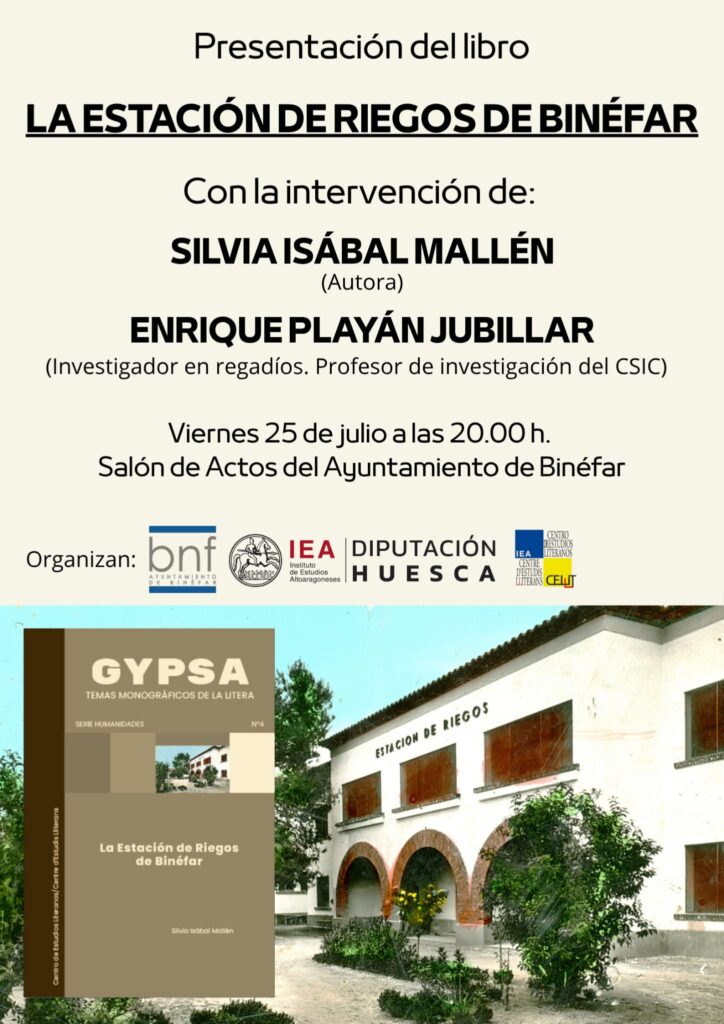
The book tells the story of the Binéfar Irrigation Station, a pioneering institution in irrigation demonstration, experimentation, and research, unique in the province of Huesca. The station was established in 1906, the same year that Alfonso XIII inaugurated the Aragon and Catalonia Canal. The initiative of the Binéfar residents was fundamental to the creation of this center, which added value to the huge public investments for the construction of the canal.
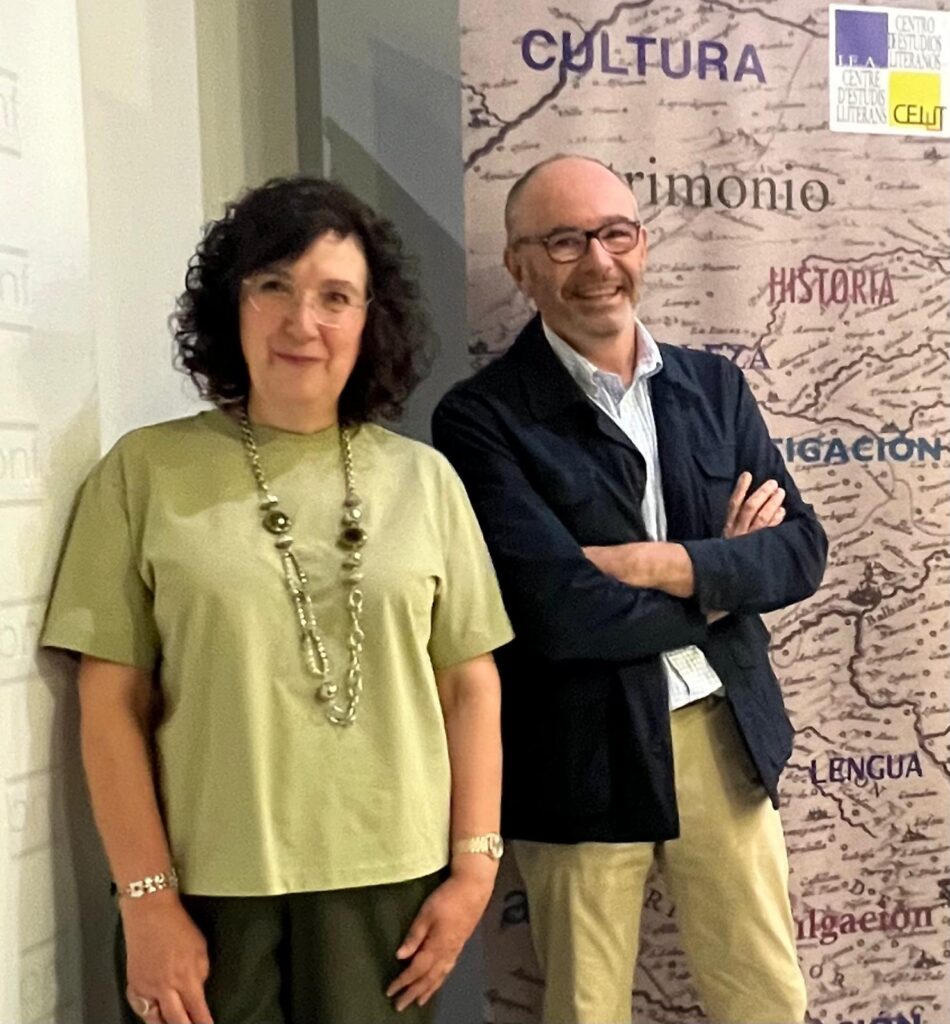
The center underwent many transformations during the turbulent 20th century, depending at different times on the Ministries of Public Works and Agriculture. In its final phase as an Irrigation Station, it was first part of INIA and then of the Agricultural Service of the Ebro River Basin Organization. During the Collectivization period of the Civil War, the building was converted into a hospital. Its history as an irrigation station was very interesting. Its set up coincided with the arrival of mineral fertilizers. To ensure the effectiveness of these products, a laboratory was set up to analyze both the soil and the fertilizers themselves. Irrigation techniques, crops, livestock farming, and soil science innovations were tested and disseminated.
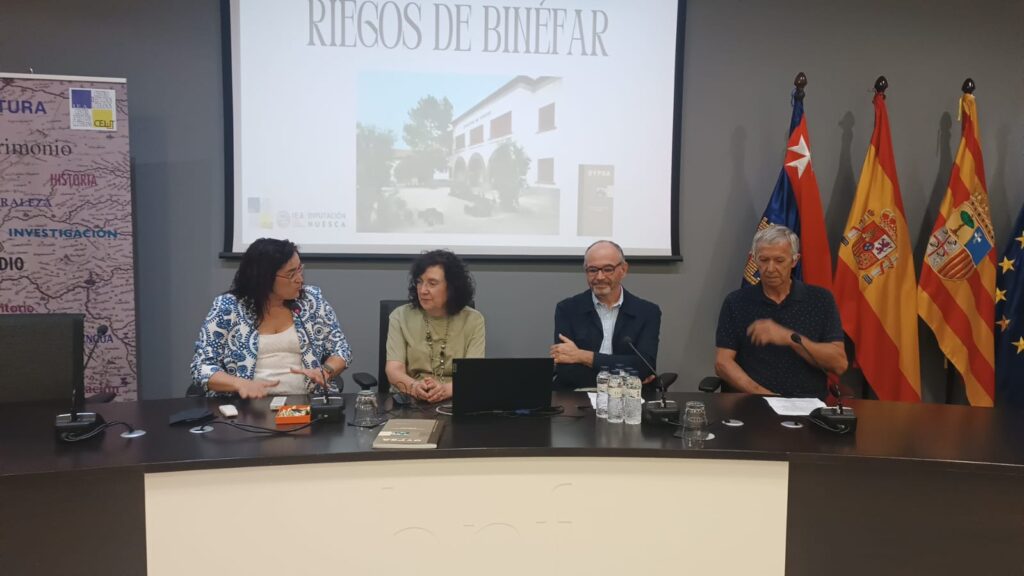
The center’s international scientific relevance is largely due to the period of Luis Cavanillas (1893-1973) as director of the center, between 1926 and 1941, with the exception of the war period. This researcher developed an intense career focused on determining crop irrigation requirements. He built a lysimetric weighing station in Binéfar, whose success led the CSIC (Spanish National Research Council) and the INIA (National Institute of Agricultural Research) to develop a network of nine lysimetric stations distributed throughout Spain. The network included both the Binéfar station itself (with 100 lysimeters) and the Aula Dei Experimental Station (with 72 lysimeters). Of the Aula Dei facility, only a few rails remain, along which the lysimeters circulated when they were weighed, and the building that housed the wheighing scale.
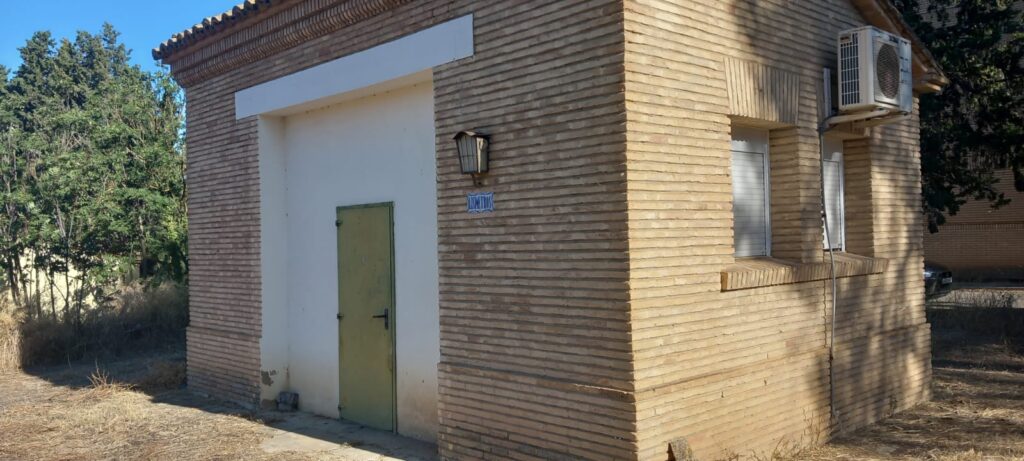
A few pictures from the event follow:
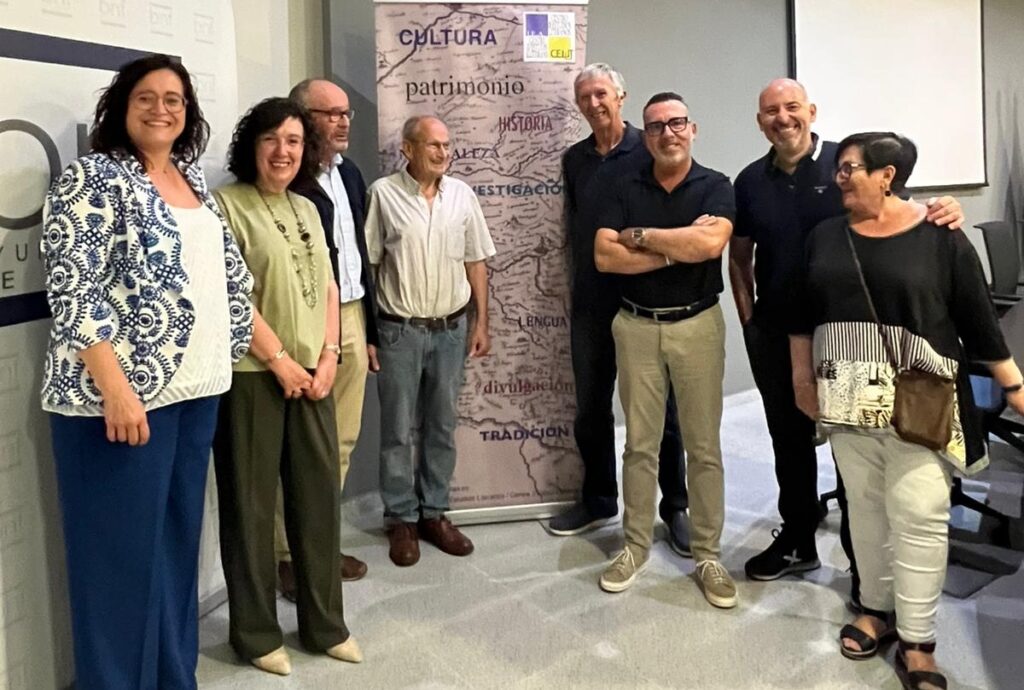
With his arms crossed, Javier José Folch, Member of the Congress of Deputies. From left to right, the Mayor, the author, the book’s presenter, and members of CELLIT.
